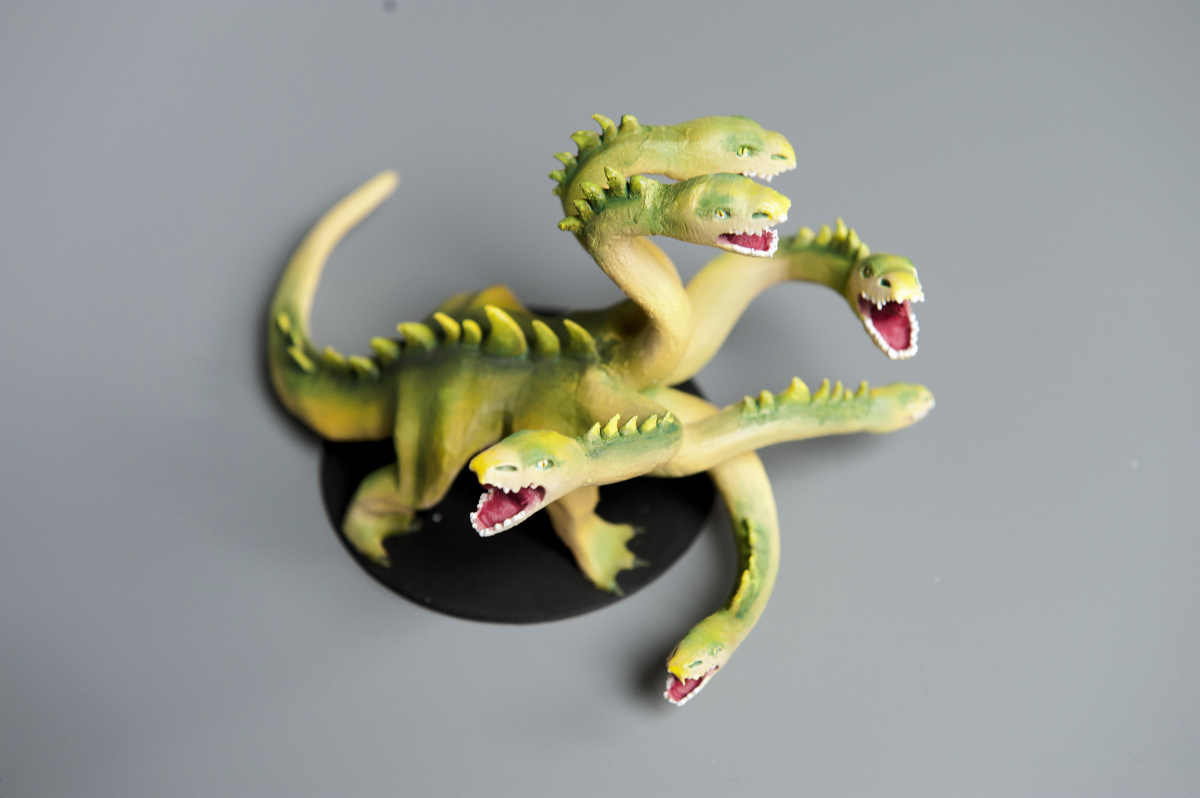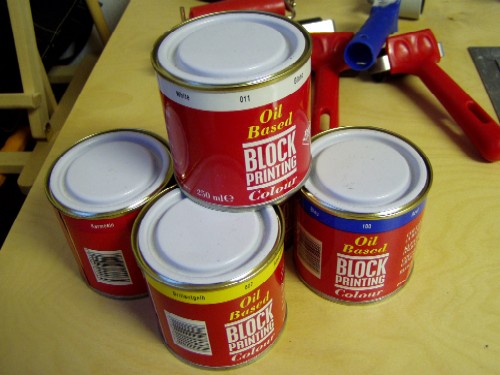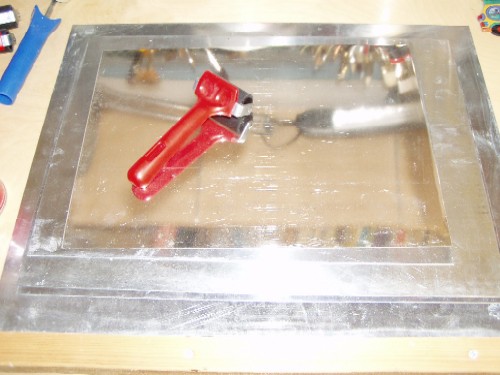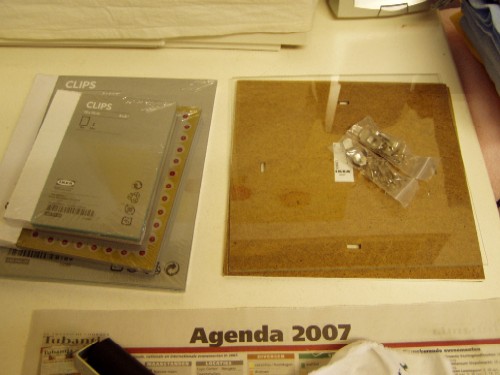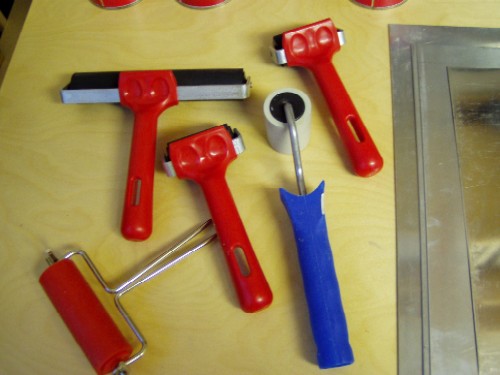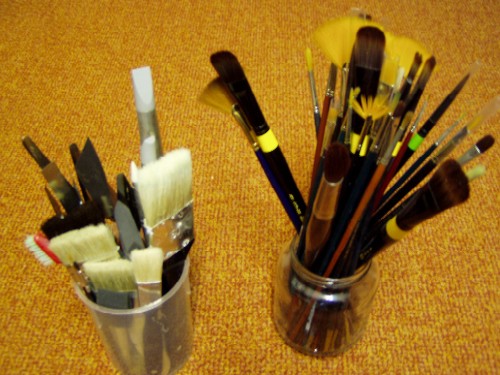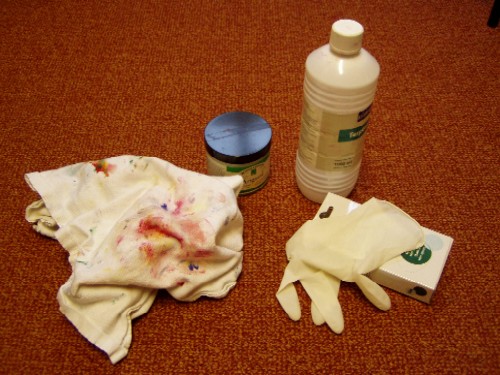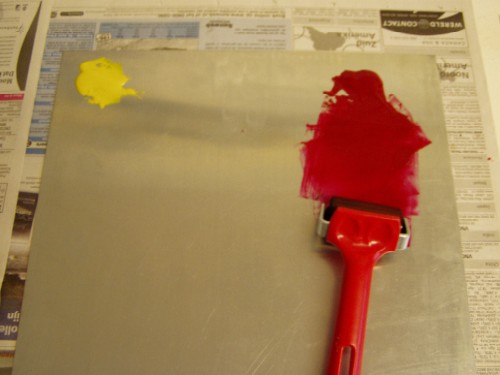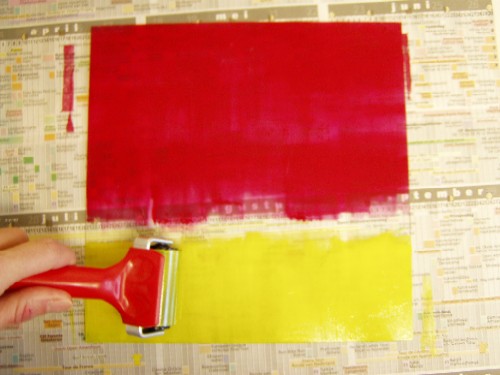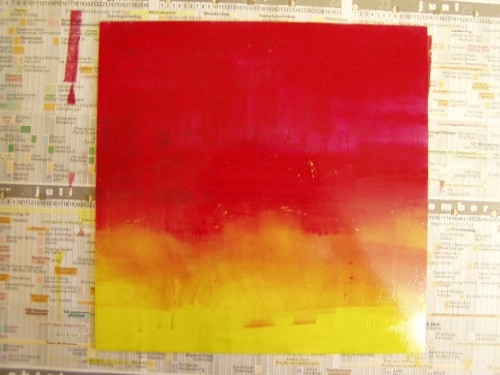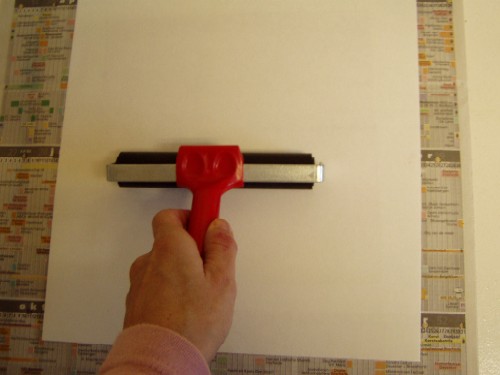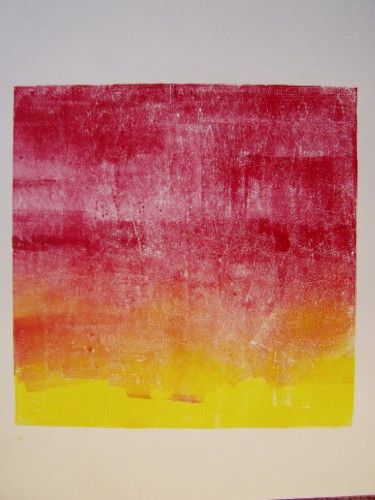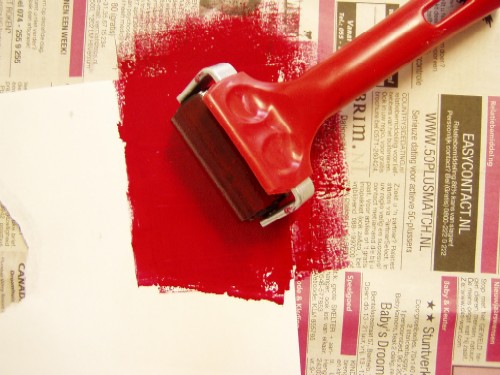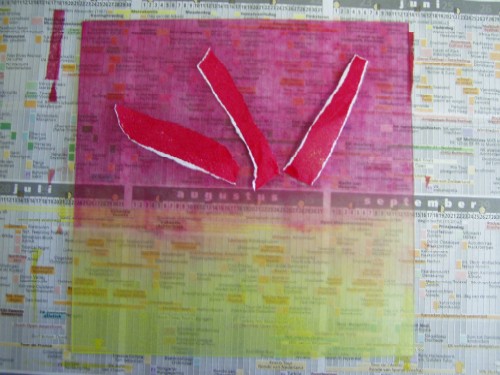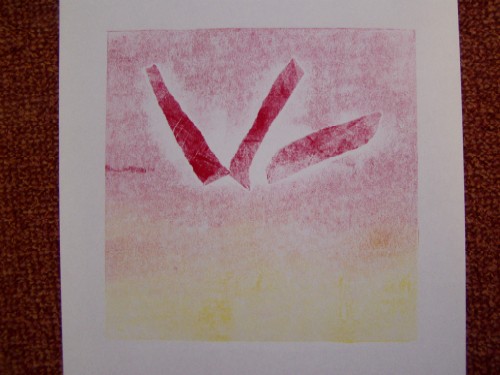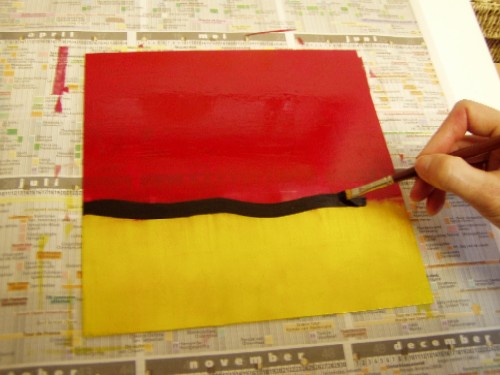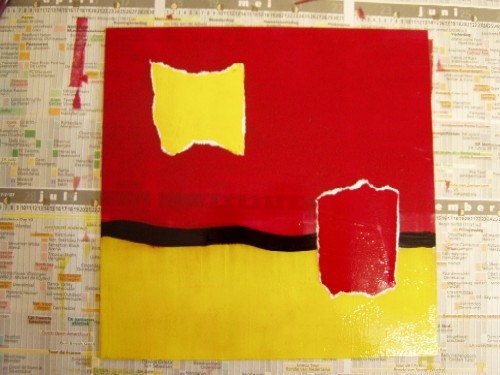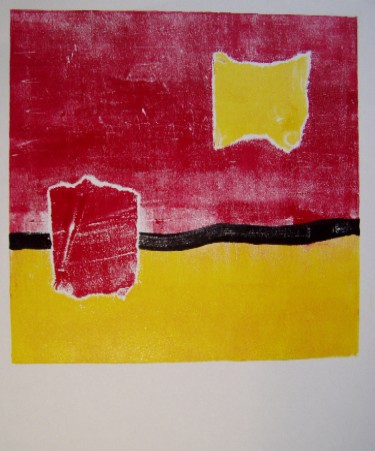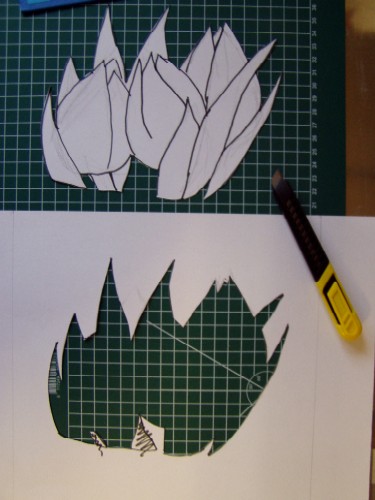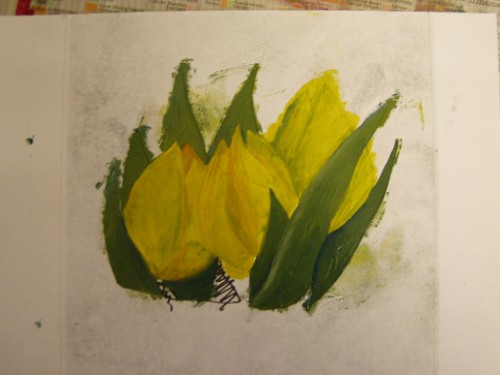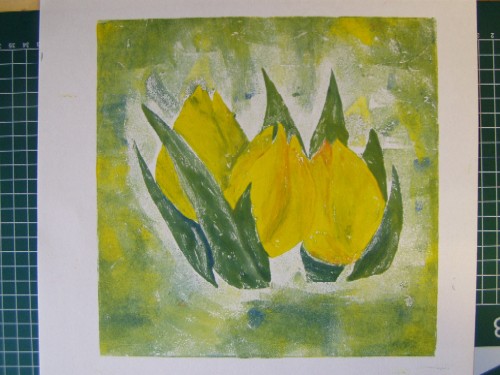| Usually, you can make two prints from one plate. The second one is usually lighter. If you have a very thick layer of ink, you can sometimes even make 2 more prints. |
| Ink a piece of paper with the roller. Tear off pieces and place them on the plate. |
| You'll notice that the pieces of paper are darker, and the background is lighter. This is because it's the first print for the pieces of paper. Make sure your paper isn't too thick, otherwise, you'll get a blur around the edges of the pieces of paper, as seen here... |
| Here, I combine a rolled plate with working with a brush. With the brush, I can add much more detail than with a roller. |
| Then, I add inked pieces of paper on top. I tore these from a larger inked piece. If you look closely, you'll see small white edges on the pieces of paper caused by tearing. |
| This is the print it produces. The white edges you saw in the previous image also remain white in the print. |



